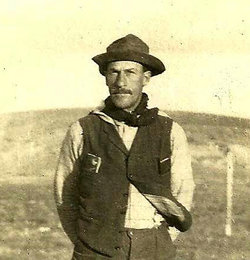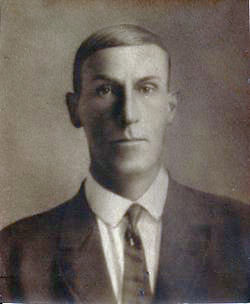
Seymour Dane, on the high plains of Montana
He was born in Arena on the East Branch of the Delaware River but he made his fortune raising cattle on the arid high plains of Montana, and ended his days growing oranges in sunny Florida.
This unlikely arc by a man named Seymour Dane makes for an interesting story, one that surfaced in a modest article on page two of the Nov. 21, 1911 Catskill Mountain News. Headlined “To Cruise the US,” the story quoted from a Chicago paper which reported that Seymour Dane, wealthy Montana ranchman, was about to set out from the Chicago River in a 60-foot, 80 hp launch on a seven-year cruise down the Mississippi, into the Gulf of Mexico, to Florida, South America and ultimately to San Francisco.
With him was Leon Kittle, the 20-year-old son of his cousin Wilbur from back home, and another companion, Charles Mead.
We’ll get back to the ‘cruise’ in a bit, but first, who was Seymour Dane?
Born in 1868 he was the son of farmer William Dane, Jr. and Catherine Kittle Dane, who lived in Arena in 1870 with their eight offspring, and William’s 89-year-old Massachusetts-born father. Two of Seymour’s big brothers, Emeritt and Franklin, had served in the Civil War. By 1880 the family had moved to Walton, where 12-year-old Seymour was already working at a local foundry.
How he got to Montana, or why, remains a mystery. But in 1900, he shows up in Malta Township, Valley County, MT, age 31, a single farmer. In 1910, he’s in the Cowan School District of Montana, listing ‘rancher’ as his occupation, still single. (A family history relates that he also owned land in Mexico which was confiscated by the government after a change in administrations there.)
In May of 1905, the Catskill Mountain News reported that Arena native Seymour Dane had been visiting his cousins, Willard and Wilbur Kittle: “He now owns a large ranch in the northern part of Montana, 12 miles from the Canadian border, and owns about 1700 head of cattle, besides a large number of sheep.”
Perhaps a few more years of long winters and hard work on the lonely plains convinced Seymour to sell the cows and buy a boat. For that’s apparently what he did, setting out on the aforementioned “cruise” in November of 1911. They reached Florida as planned, but then love intervened. On the Miami River, they met Felder Lang, who with his brother had a sightseeing boat for tourists. Felder had a daughter Kate, an elementary school teacher. Seymour and Kate hooked up. End of cruise. (Young Leon Kittle evidently returned to New York where he married Bertha Kelly, lived in Denver and died in 1975.)
The Danes were married Dec. 11, 1913, at her parents’ estate, “Inchachee,” which is now Sewell Park near the 17th Avenue Bridge on the Miami River. Seymour and Kate built a home in Miami, and a 40-acre citrus grove in the Redlands, where they raised fruit for 25 years. He reportedly developed new fruit packing and shipping methods that reduced costs and increased consumer confidence in the quality of the produce.
Both Seymour and Kate were very active in community affairs, civic and business organizations, and Republican politics, and though they had no children, he served on the board of education in South Dade. He was very interested in photography and ham radio and had his own workshop for these hobbies. His brother George had found his way to Florida, too, and with wife Mae lived a mile away.

Seymour died in 1933 at the age of 59. A Homestead, FL obituary said death was the result of “an internal ailment of long standing.” A family account says he was killed in a tractor accident in the citrus grove. His wife passed away in 1965 at their Miami home. The Danes are buried in Woodlawn Park Cemetery, Miami.
The graves of his parents and other family members, who were buried in Arena, were disinterred when the Pepacton Reservoir was built. Records indicate they were reburied in New Kingston Valley Cemetery, but an inventory of headstones shows no Danes there. More research is needed.
